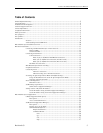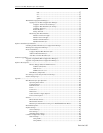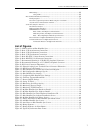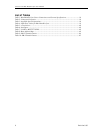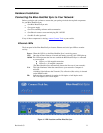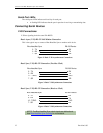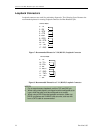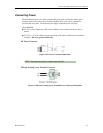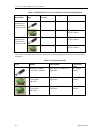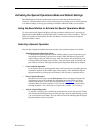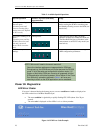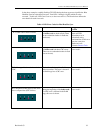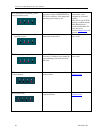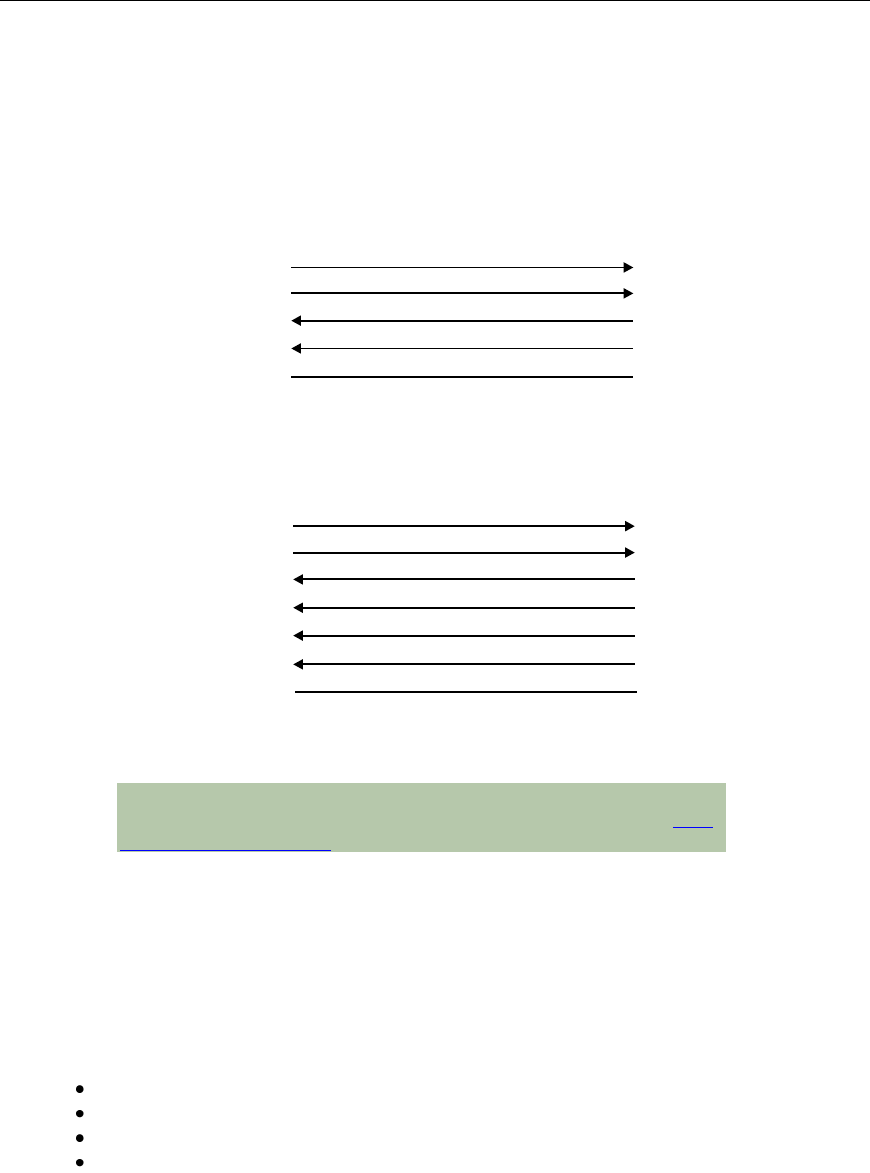
Connect Tech Blue Heat/Net Sync User Manual
Revision 0.03 13
RS-422/V.11 Connections
The following are basic connections that can be accomplished when the I/O levels are in V.11 (RS-
422) mode. V.11 mode signaling can be enabled with EIA-530, RS-449 or X.21 modes on your Blue
Heat/Net Sync.
Figure 5: Basic RS-422/V.11 Asynchronous Connections
Figure 6: Basic RS422/V.11 Synchronous Connections
NOTE: Blue Heat/Net Sync clock signals are bidirectional. The
Blue Heat/Net Sync can either source or receive a clock. See Blue
Heat/Net Sync Clocking for more details.
Blue Heat/Net Synchronous Clocking
The clocking circuits on the Blue Heat/Net Sync are very flexible. The Blue Heat/Net Sync DB-25 clock
pins are bi-directional. This means that the TXC or RXC pins can be inputs receiving a clock or outputs
driving a clock. Functionally the two pins are equal. For example, the following clocking combinations are
possible:
RXC as clock input and TXC as clock input.
RXC as clock output and TXC as clock output.
RXC as clock input and TXC as clock output.
RXC as clock output and TXC as clock input.
The Blue Heat/Net Sync receivers and transmitters can be clocked independently from any combination of
the above or from internal clock sources.
Clocking is also available from the EXT_REF_CLK input pin on the DB-9 female.
2 - TX-
14 - TX+
16 - RX+
3 - RX-
9 - R/TXC+
17 - R/TXC-
7 - SR
RX-
RX+
TX+
TX-
RXC
RXC
SR
Blue Heat/Net Sync
RS-422/V.11 Device
2 - TX-
14 - TX+
16 - RX+
3 - RX-
7 - SR
RX-
RX+
TX+
TX-
SR
Blue Heat/Net Sync
RS-422/V.11 Device



